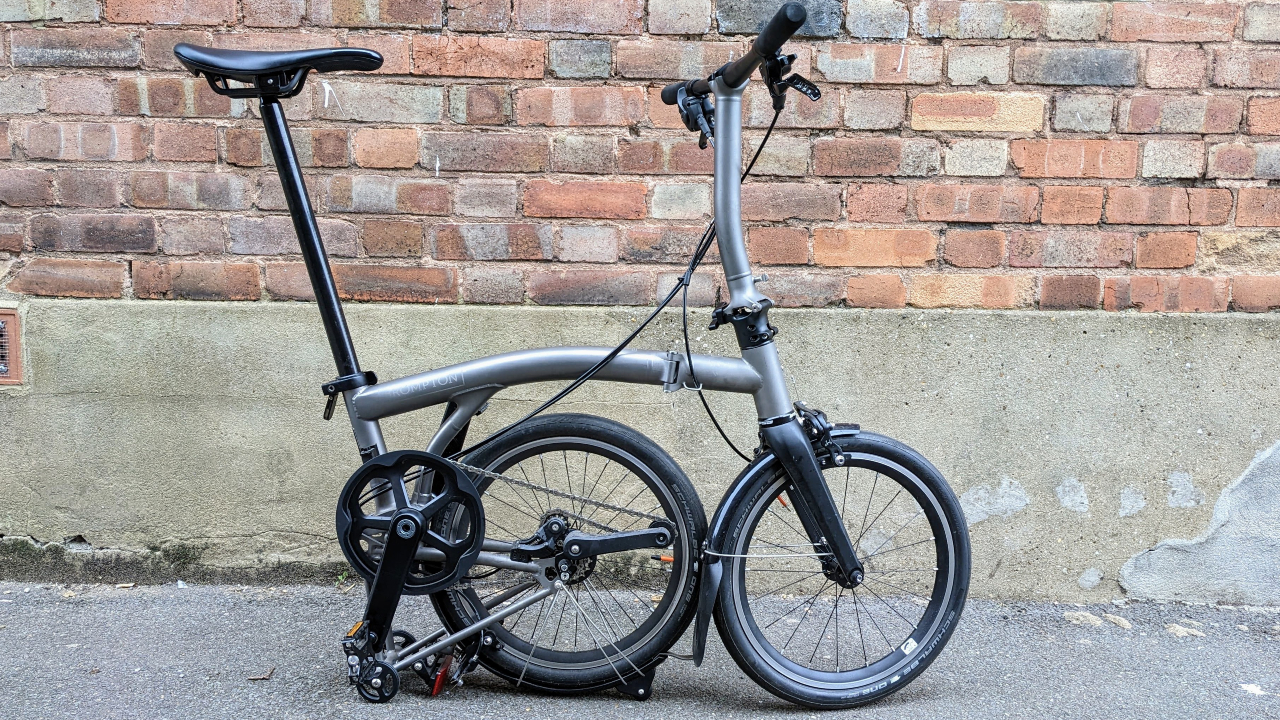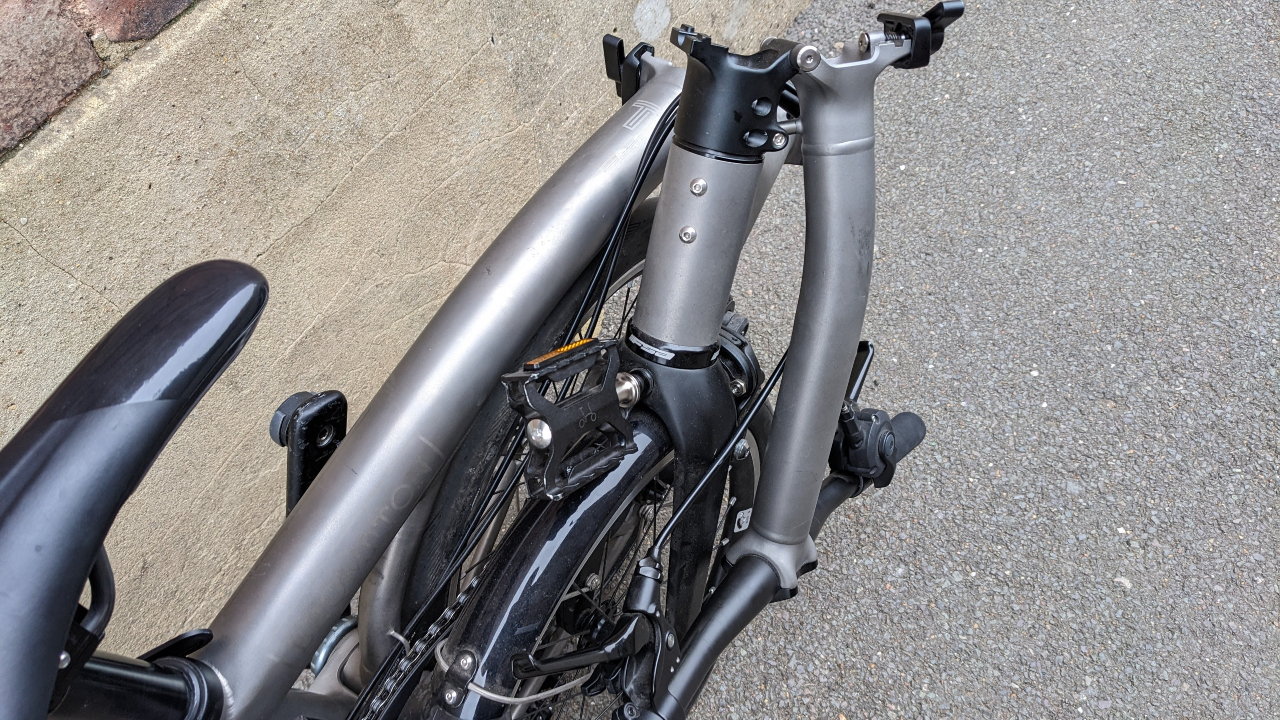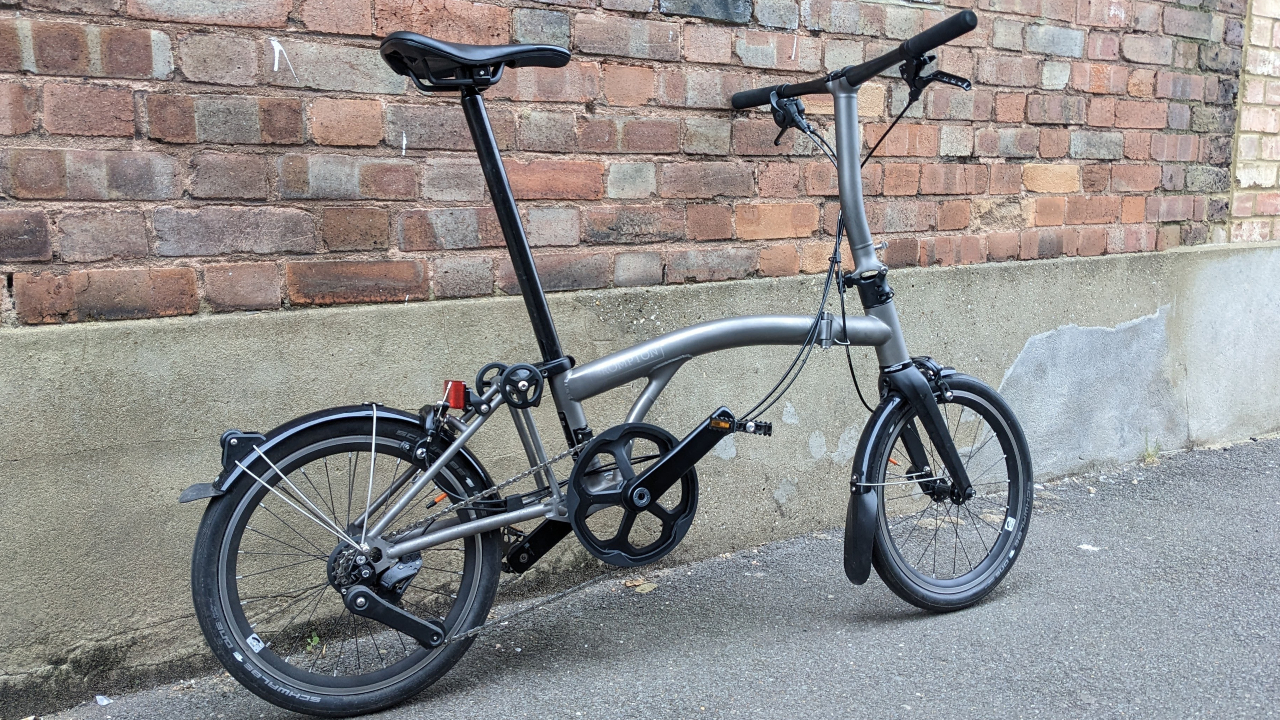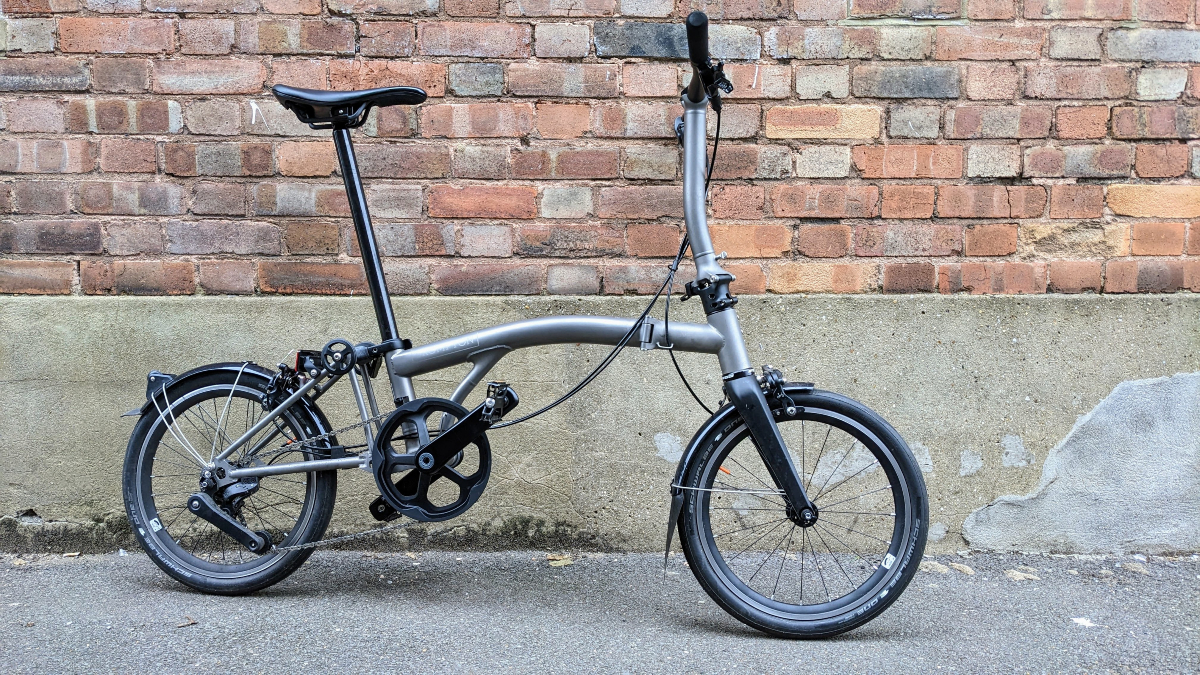Our Verdict
The latest in cutting-edge manufacturing from Brompton is worthy of its numerous design awards, but handling and gear issues mean it’s not perfect.
For
- Lightweight build means a joy to ride
- Functional features like mudguards and a bell included
- Light enough to carry with ease when folded
Against
- Price
- Handling jerky at high speeds
- Gearing range could be better
You can trust Coach
The Brompton T Line turned heads when it was announced in October 2021. The lightest fold-up bike the brand has made, its single-speed version weighs 7.45kg – less than most high-end carbon fibre road bikes – while the Urban edition was 500g more but included the choice of having four gears.
Brompton managed this by taking the 150 parts that make up its standard steel Brompton C Line and redesigning them so they stayed equally robust, but at a fraction of the weight. The frame, for example, is handmade from titanium because of the metal’s strength-to-weight ratio, while other neat tweaks include a carbon fibre crankset, a compact cassette rather than a standard, internally geared Sturmey-Archer hub, and even super-light lock-on foam grips.
But how does this Brompton fare amid the cut and thrust of commuting? And is there any way of justifying its £4,415 price?
Brompton T Line: Price And Availability
The T Line was announced in October 2021 with purchases only available via lottery. Although sold out at the time of writing, Brompton says it expects more to be available soon, and the second wave of releases won’t involve a ballot. You can find out more and buy by visiting the Brompton site.
There are two T Line models to choose from: the 7.45kg, One model, which costs $5,225 in the US and £4,180 in the UK and the 7.95kg Urban ($5,500/£4,415) that I tested. Both feature the same components: a titanium main and rear frame, carbon fibre fork, handlebars and crankset, 16in wheels and Schwalbe One tyres with added puncture protection. The only difference between the models is the gearing. The One is single-speed and the Urban has a four-speed set-up with derailleur shifting.

When compared with the rest of Brompton’s range, the T Line is head and shoulders above the rest. If the A Line is its entry-level model, the C Line its everyday steel workhorse and the P Line its more performance-focused offering, then the T Line range should be regarded as Brompton’s concept collection.
How I Tested The Brompton T-Line
I’ve ridden about 100km around London on the Brompton T-Line in all conditions, including short trips to the local shops and several journeys of an hour in length. It’s a fold-up bike of course and I’ve put this feature to the test too, taking the bike into a restaurant when meeting friends for lunch, as well as onto the Tube when I couldn’t face riding home. I’ve got extensive experience riding and rating everything from carbon fibre road bikes to fold-up commuters, including the Brompton C-Line.
Design
What I noticed first about the T Line was how light it was. Having spent a few months last summer testing a C Line Explore, I was expecting a compact yet still bulky package. I did a double-take when it arrived and blew away those preconceptions. I could immediately see the benefit of having a folding bike this light, particularly if used during a multi-modal commute where you’re getting on and off public transport or if entering and exiting your home involves tackling flights of stairs.
The five-stage unfolding dance common with Bromptons made me tap into my muscle memory, although I was left stumped when it came to the final step – fitting the left-hand pedal. On a standard Brompton C Line, the design sees you slide one out of a folded-down contraption to create a fully functioning pedal, but on the T Line, there was just an empty hole in the crank arm. “They must have forgotten to send me a pedal,” I told myself, before spotting a pedal magnetically slotted into the back of the fork. Just one of the 100-plus ways Brompton has rethought the design, this is a clever weight-saving solution that helped retain the practicality that makes the brand’s fold-up bikes unique.
The Ride

Most of the time, the feel of the ride on the T Line was as good as you’d hope for on a £4,415 bike. The titanium frame helped smooth out all but the biggest bumps I came across, while it remained comfortable whether popping a mile up the road or on an hour-plus journey across the city.
Its lightness took the sting out of even the steepest ascents I could find in north London and its gearing range would ferry me to the top without having to get off and push. Its stiff carbon fibre crankset helped me lay down some power – whether that was getting a head start when pulling away from traffic lights or flying up a hill – and it didn’t take long to accelerate to top speed.
But this is also where I found an issue with the T Line. Its highest gear was a little lacking, and I was left pedalling furiously when riding above 20mph. At these speeds the handling would also feel jerky, which made any descents nerve-racking.
That said, the T Line isn’t trying to be a racing whippet, and if you’re after something that’s fast, light and handles well at high speeds, you are better off investing in a premium carbon fibre road bike.
Value

When a bike costs in excess of £4,000, it’s going to have to really deliver. The materials, craftsmanship and design that have gone into the T Line go some of the way there, while its lightweight construction will leave some avid Brompton fans weighing up whether to upgrade from their old steel steed, which will be looking somewhat portly in comparison.
But when you look at what else the same amount of money could get you, the attractiveness of the T Line starts to fade. If commuting, you could acquire a great hybrid bike or even the Brompton C Line for less than £1,500 and still be left with £3,000 for an all-out road bike. Yes, this option won’t be as light or groundbreaking, but it will work out better in the long run.
Is The Brompton T Line Urban Worth It?
The Brompton T Line should be championed for what it is – an amazing piece of engineering that has taken a much-loved design and brought it into the 21st century. Its weight and utility means it could be the only bike you need in your life, but its price is the biggest sticking point. Given the quality of its construction and the components, that’s not surprising, but it will keep it out of reach for all but those with the deepest pockets.
Charlie Allenby is a journalist with a passion for pedalling. He contributes features and buying advice about cycling, and is Coach’s dedicated turbo trainer reviewer. He is also Coach’s chief whey and casein protein powder tester, trying as many brands as possible.
Charlie’s first book, Bike London, is out now. He has written for The Guardian, The Independent and BikeRadar, among others.


